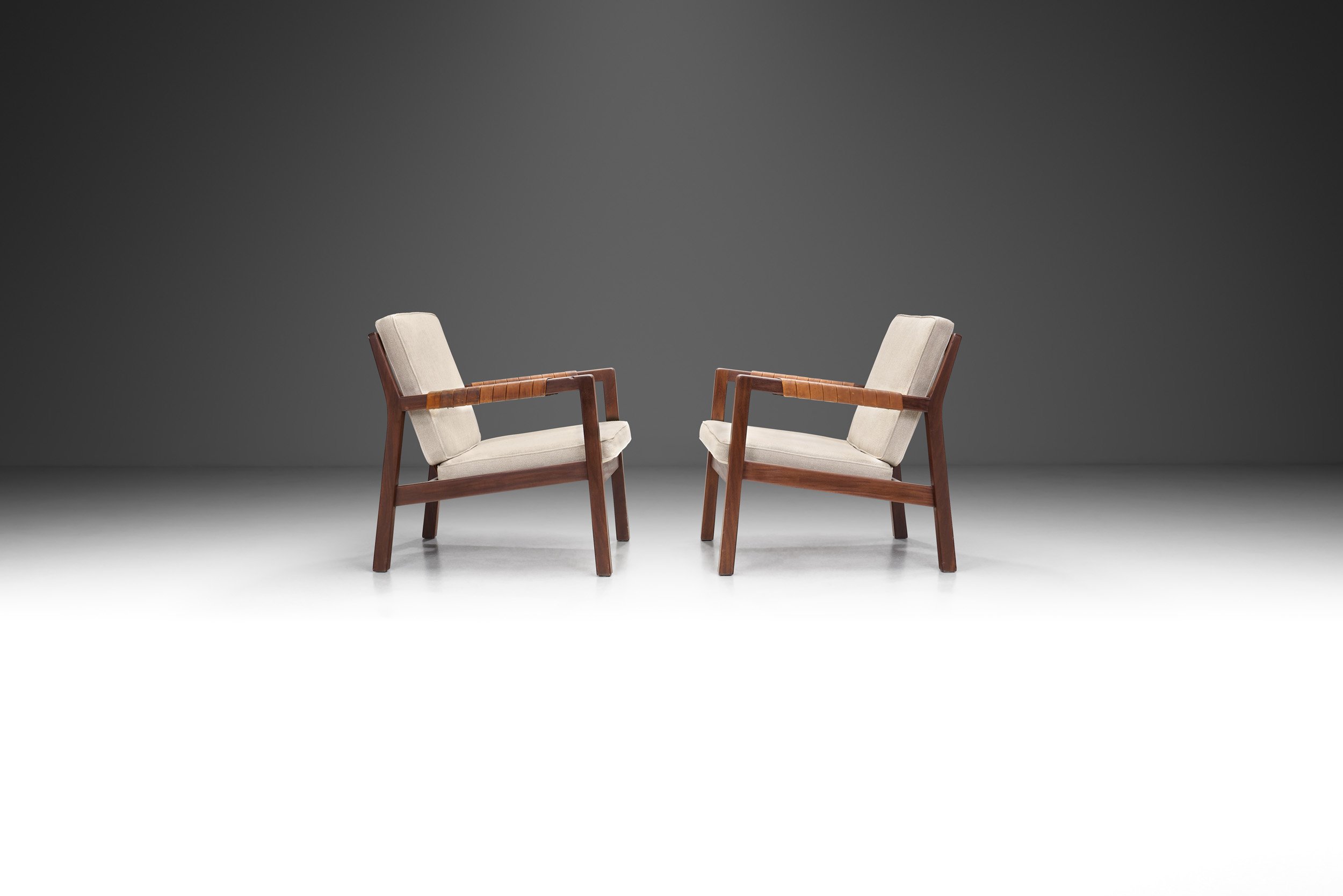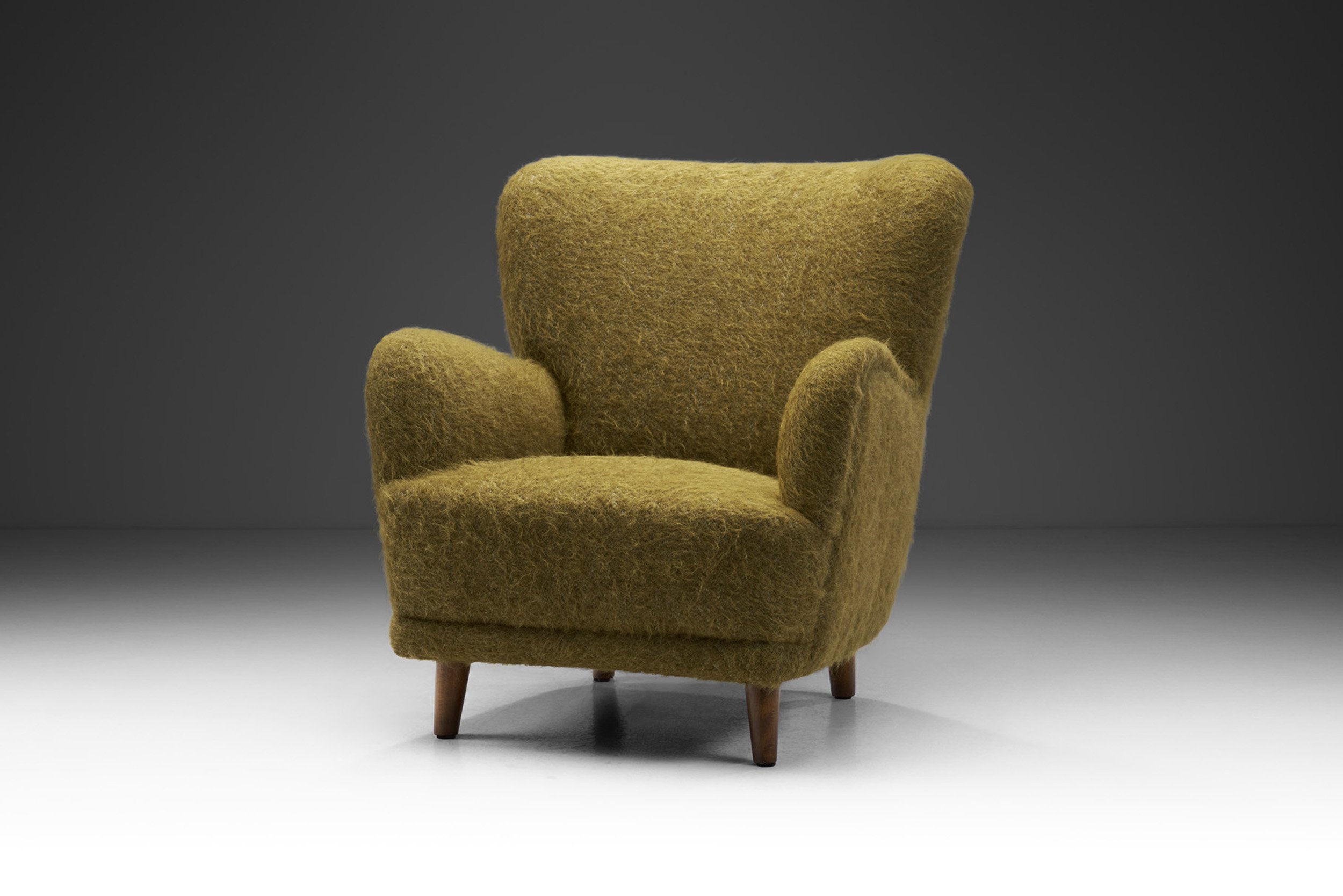Fritz Hansen Upholstered Armchairs with Rolled Arms, Denmark ca 1940s (sold)














Fritz Hansen Upholstered Armchairs with Rolled Arms, Denmark ca 1940s (sold)
Throughout Scandinavia, there's a long history of pride in craftsmanship which is especially true of Denmark and one of its most reputable furniture makers, Fritz Hansen. This beautiful pair of armchairs is an exceptional flagbearer of Danish Mid-Century Modernism.
Danish modernist furniture designs, such as this wingback chair, became known for their sober character and undecorated elegance. Accordingly, the main decorative element is the design itself, aided by quality materials and craftsmanship. When the Copenhagen-based furniture maker Fritz Hansen opened for business more than 140 years ago, the company adhered to the traditional, time-honoured Danish values of the highest quality materials and craftsmanship in woodworking and joinery. Yet thanks to the postwar innovations of Arne Jacobsen and others, Fritz Hansen would become the country’s leader in Scandinavian modern design using new, forward-looking materials and methods. This classic model is a great representation of this sentiment with a distinctive design that is based on classic features such as the rolled arms and a curving back of the Chesterfield style. As the back curve inwards, while the arms curve outwards, there is a great balance that makes these chairs look open and cosy. The textured, light upholstery elevates the curves and reclined backs even further, with button tufting on the backs. The dark wooden legs provide contrast both in colour, shape, and material with a sculpted look in the front.
Fritz Hansen started his company in 1872, and has become the manufacturer of some of the most emblematic chairs of the mid-20th-century. Like these armchairs, beautifully crafted, functional designs characterize the work of the manufacturer with a distinctly Danish aesthetic that is both timeless and timely.
SOLD
Condition:
In good vintage condition. Wear consistent with age and use. The chairs have been reupholstered recently in a premium fabric. Each of our items can be re-upholstered by our in-house atelier in a fabric of choice. Please reach out for more information.
Dimensions:
31.88 in W x 32.08 in D x 32.28 in H; Seat height 16.14 in; Arm height 23.62 in
81 cm W x 81.5 cm D x 82 cm H; Seat height 41 cm; Arm height 60 cm
About the designer:
Fritz Hansen started his company in 1872, specializing in the manufacture of small furniture parts. In 1915, the firm became the first in Denmark to make chairs using steam-bent wood (a technique most familiar from birch used in the ubiquitous café chairs by Austrian maker Thonet). At the time, Fritz Hansen was best known for seating that featured curved legs and curlicue splats and referenced 18th-century Chippendale designs.
In the next few decades, the company promoted simple, plain chairs with slatted backs and cane or rush seats designed by such proto-modernist masters as Kaare Klint and Søren Hansen. Still, the most aesthetically striking piece Fritz Hansen produced in the first half of the 20th century was arguably the China chair of 1944 by Hans Wegner. Everything changed in 1952 with Arne Jacobsen’s Ant chair which was the breakthrough. Its silhouette suggests the shape of the insect’s body, and the lightweight, stackable chair and its biomorphic form became an international hit.
The Egg and Swan chair models led Fritz Hansen to fully embrace new man-made materials, like foam, plastic and steel wire used to realize the avant-garde creations of later generations of designers with whom the firm collaborated, such as Piet Hein, Jørn Utzon (the architect of the Sydney Opera House) and Verner Panton. If the Fritz Hansen of 1872 would not now recognize his company, today’s connoisseurs certainly do.










